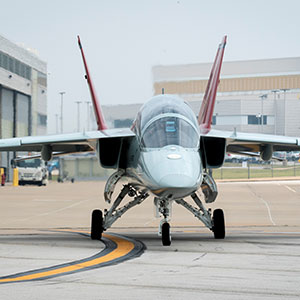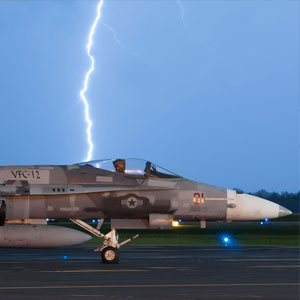Mountaintop Altiport: How a Tiny, Sloping Runway Provides Access to a Legendary Ski Resort
Ask a group of pilots to describe the most challenging airports they’ve ever experienced, and you’ll hear stories about airports around the world that present a wide variety of unique characteristics. From airports built on plateaus like Telluride, Colorado, to others on tiny scraps of land jutting out into the ocean like Saba in the Caribbean, short runways and unusual geography can make approaches and departures far more challenging than everyday airports.

One of the world’s most challenging and unique airports is one relatively few pilots have flown into, primarily because of the extreme layout and the specialized training required to negotiate it. Known as an “altiport” due to its location in mountainous terrain and its dramatically sloped runway, Courchevel (ICAO code LFLJ) is located near Chambéry in the French Alps and services the adjacent Courchevel Méribel ski resort.

When the ski resort opened in 1946, the only access involved a challenging and time-consuming overland route. Well-to-do vacationers only tolerated this for about 15 years before demanding air access. In 1961, some enterprising local pilots worked with the resort director to construct the altiport to improve accessibility.

Building a functional airport on the side of a mountain is inherently a difficult task, and the local terrain made it doubly so at Courchevel. As the only available plot of land was positioned on a literal mountainside, the first runway was short and steep. Even today, after being extended, it is only 984 feet (300 meters) long and has an average slope of 15º. This is several times steeper than the steepest standard runways in regular use around the world, and it introduced a multitude of challenges to pilots.
Takeoffs could only occur downhill, for example, and landings could only occur uphill. Additionally, visual cues are massively different from standard runways, and a pilot lacking the required specialized training would likely miscalculate the approach with potentially disastrous consequences. Add harsh winter mountaintop weather conditions to the equation, and Courchevel quickly became a place with which only the sharpest and most thoroughly trained pilots could safely contend.
Initially, the altiport was somewhat rudimentary. With a dirt runway and limited facilities for aircraft and passengers, it was accessible only by small, rugged utility aircraft. But as the popularity of the ski resort expanded, the demand for a more modern and more usable airport followed suit.

By the 1970s, the runway had been widened, paved, and realigned to accept larger aircraft. The arrival of the 1992 Olympic Winter Games demanded further development to accommodate the largest aircraft ever to service Courchevel, the de Havilland Canada DHC-7 Dash-7. A 44,000-pound (19,958 kg) four-engine turboprop airliner capable of carrying up to 54 passengers, the Dash-7 was optimized for short takeoff and landing (STOL) operations and was perhaps the only aircraft in existence that could transport so many people into such a uniquely-demanding airport.
Today, helicopters make up the majority of traffic into Courchevel, but smaller fixed-wing aircraft continue to visit as well. In addition to private aircraft such as the Pilatus PC-12, a local flight school operates a number of small piston aircraft into the altiport for training purposes.
Topics Related To: MODERN AVIATION
First Boeing T-7A Red Hawk Delivered to Air Force
The first production Boeing T-7A Red Hawk was delivered to the US Air Force on September 14, 2023. Intended to replace the aging Northrop T-38 Talon that first flew in 1959, the Red Hawk will provide a modern supersonic flight training platform for fighter and bomber pilots. Topics Related To: MODERN AVIATION
F/A-18 Hornet Lightning Bolt
A US Navy F/A-18 is illuminated by a single bolt of lightning. Painted in aggressor colors, these Hornets are used to replicate the tactics of potential adversaries at the Naval Fighter Weapons School, or Top Gun. Shot at f/8 with a 30-second exposure time with a Nikon D90 and Nikkor 180mm prime lens. Topics Related To: MODERN AVIATION
Grumman Turbo Tracker – WWII-era Sub Hunter Reborn into Aerial Firefighter
A Grumman/Marsh Aviation S-2FAT Turbo Tracker returns from a training flight in Ramona, California. Originally constructed as a US Navy carrier-borne anti-submarine warfare aircraft, it has been remanufactured with entirely new systems and upgraded, more powerful turboprop engines and is now utilized as a firefighting aircraft in California. Topics Related To: MODERN AVIATION




